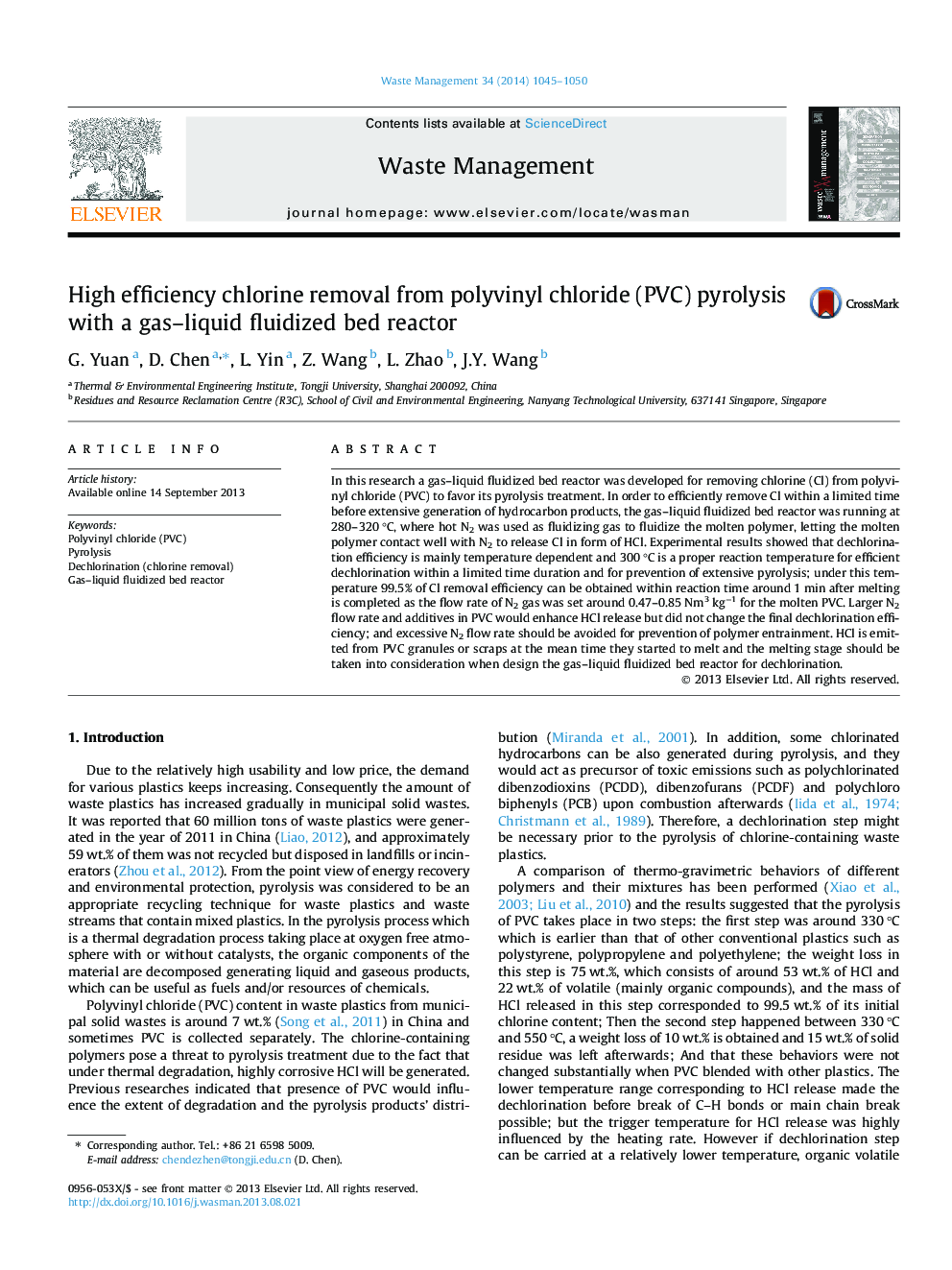| کد مقاله | کد نشریه | سال انتشار | مقاله انگلیسی | نسخه تمام متن |
|---|---|---|---|---|
| 4471627 | 1315035 | 2014 | 6 صفحه PDF | دانلود رایگان |

• Gas - liquid fluidized bed reactor is developed to remove chlorine from PVC plastics before intense pyrolysis.
• Dechlorination efficiency is mainly temperature dependent and 300 °C is a suitable temperature.
• 99.5 wt.% of chlorine in PVC plastics can be removed around 1 min after melting.
• Proper flow rate of fluidizing gas is required but excessive flow rate should be avoided.
• Additives enhanced HCl release but did not change the final dechlorination efficiency.
In this research a gas–liquid fluidized bed reactor was developed for removing chlorine (Cl) from polyvinyl chloride (PVC) to favor its pyrolysis treatment. In order to efficiently remove Cl within a limited time before extensive generation of hydrocarbon products, the gas–liquid fluidized bed reactor was running at 280–320 °C, where hot N2 was used as fluidizing gas to fluidize the molten polymer, letting the molten polymer contact well with N2 to release Cl in form of HCl. Experimental results showed that dechlorination efficiency is mainly temperature dependent and 300 °C is a proper reaction temperature for efficient dechlorination within a limited time duration and for prevention of extensive pyrolysis; under this temperature 99.5% of Cl removal efficiency can be obtained within reaction time around 1 min after melting is completed as the flow rate of N2 gas was set around 0.47–0.85 Nm3 kg−1 for the molten PVC. Larger N2 flow rate and additives in PVC would enhance HCl release but did not change the final dechlorination efficiency; and excessive N2 flow rate should be avoided for prevention of polymer entrainment. HCl is emitted from PVC granules or scraps at the mean time they started to melt and the melting stage should be taken into consideration when design the gas–liquid fluidized bed reactor for dechlorination.
Journal: Waste Management - Volume 34, Issue 6, June 2014, Pages 1045–1050